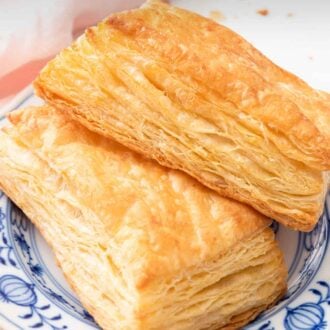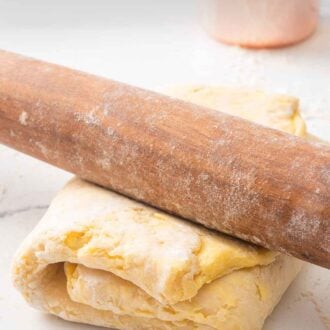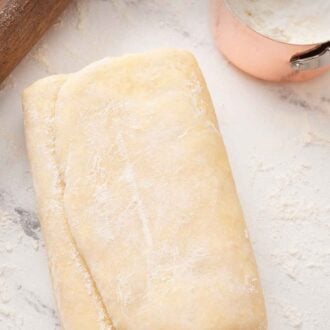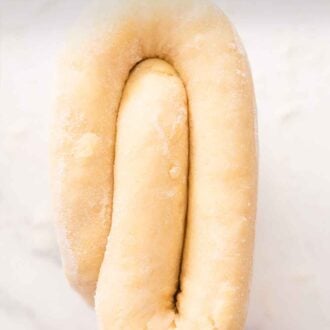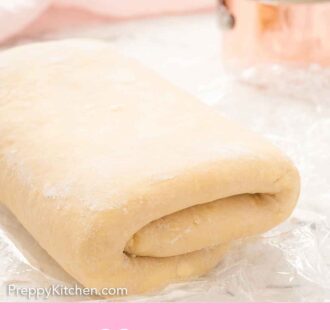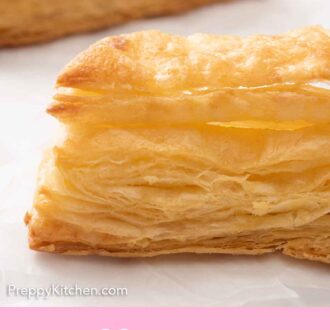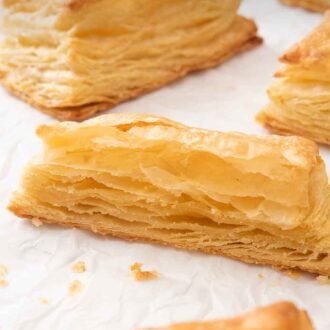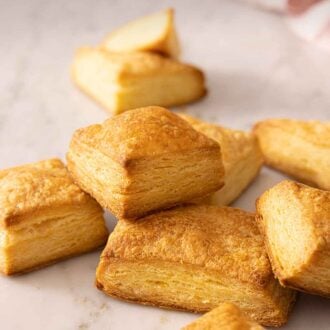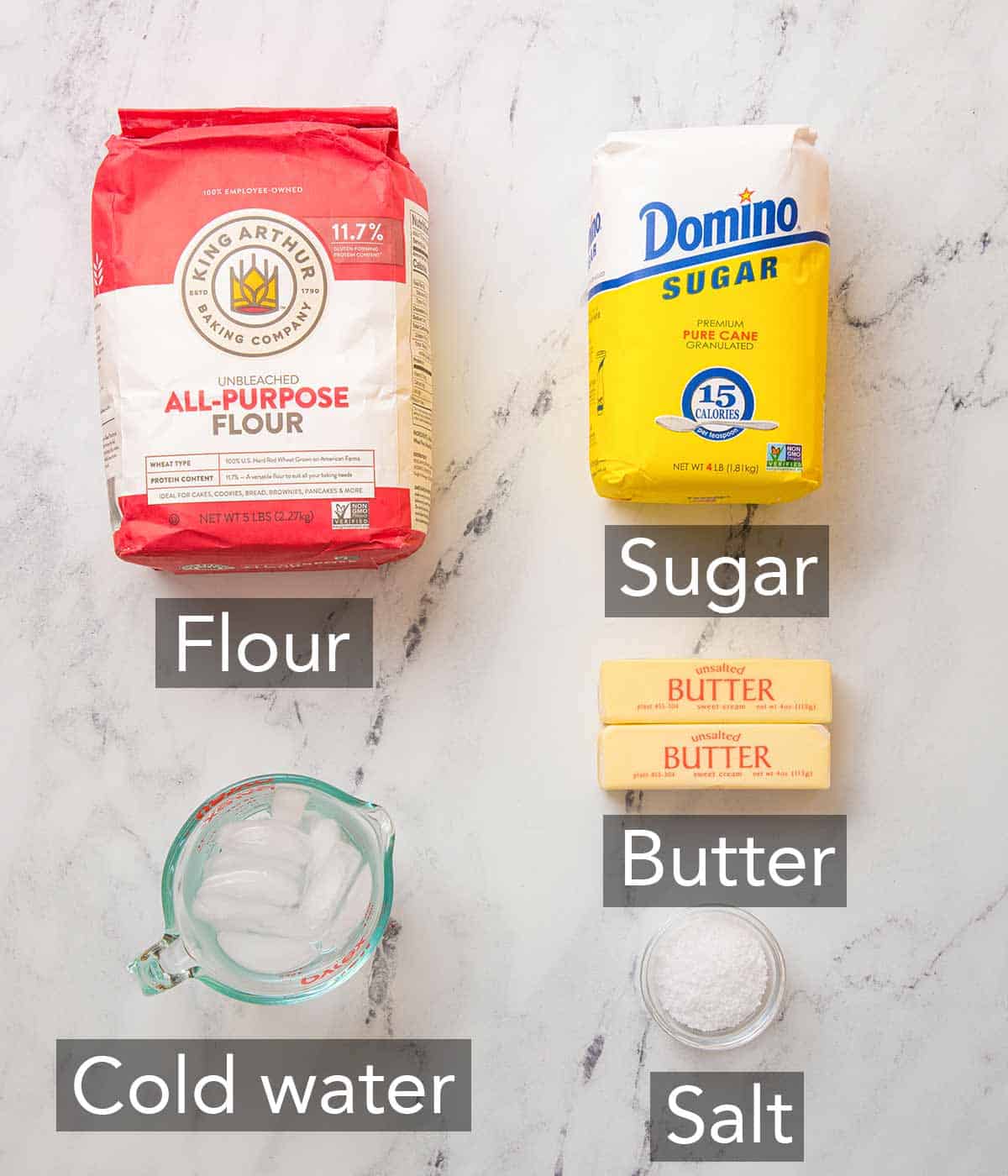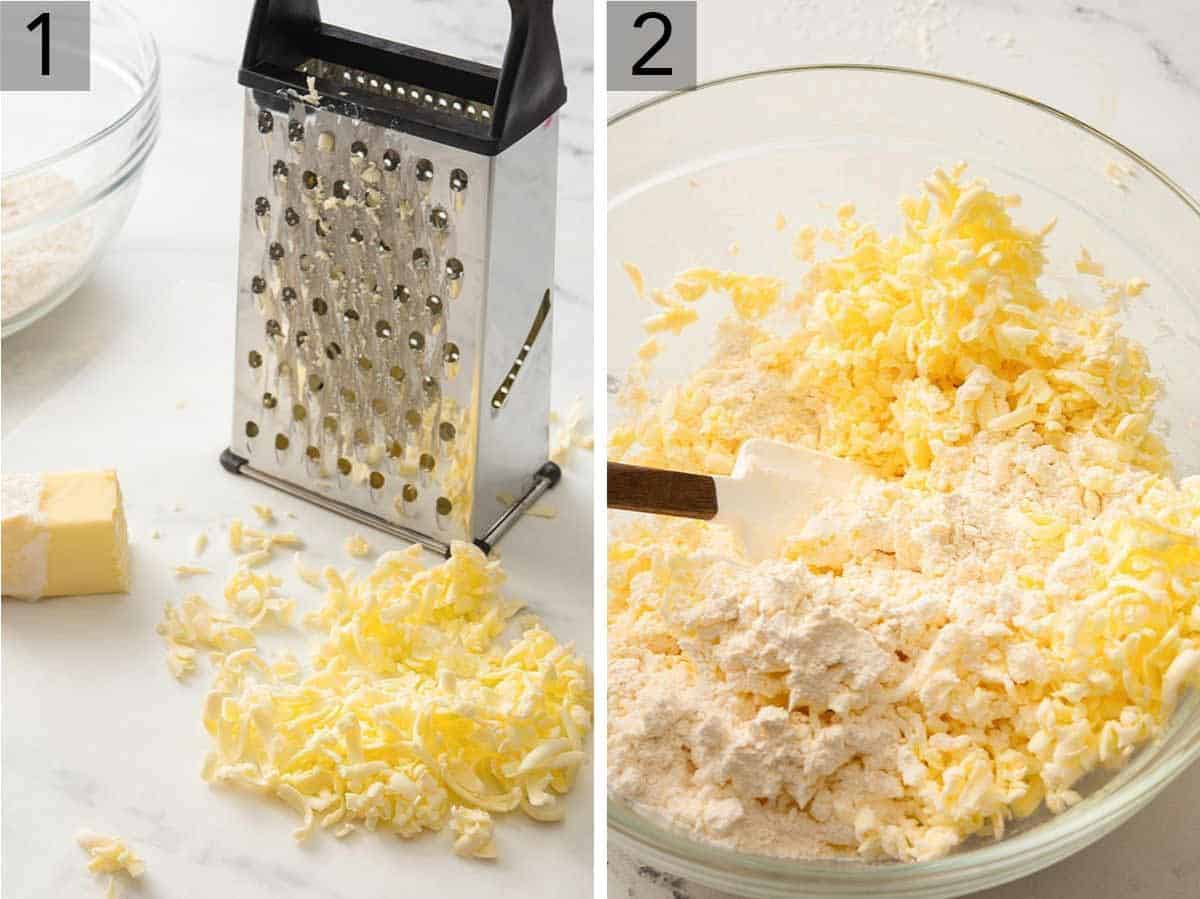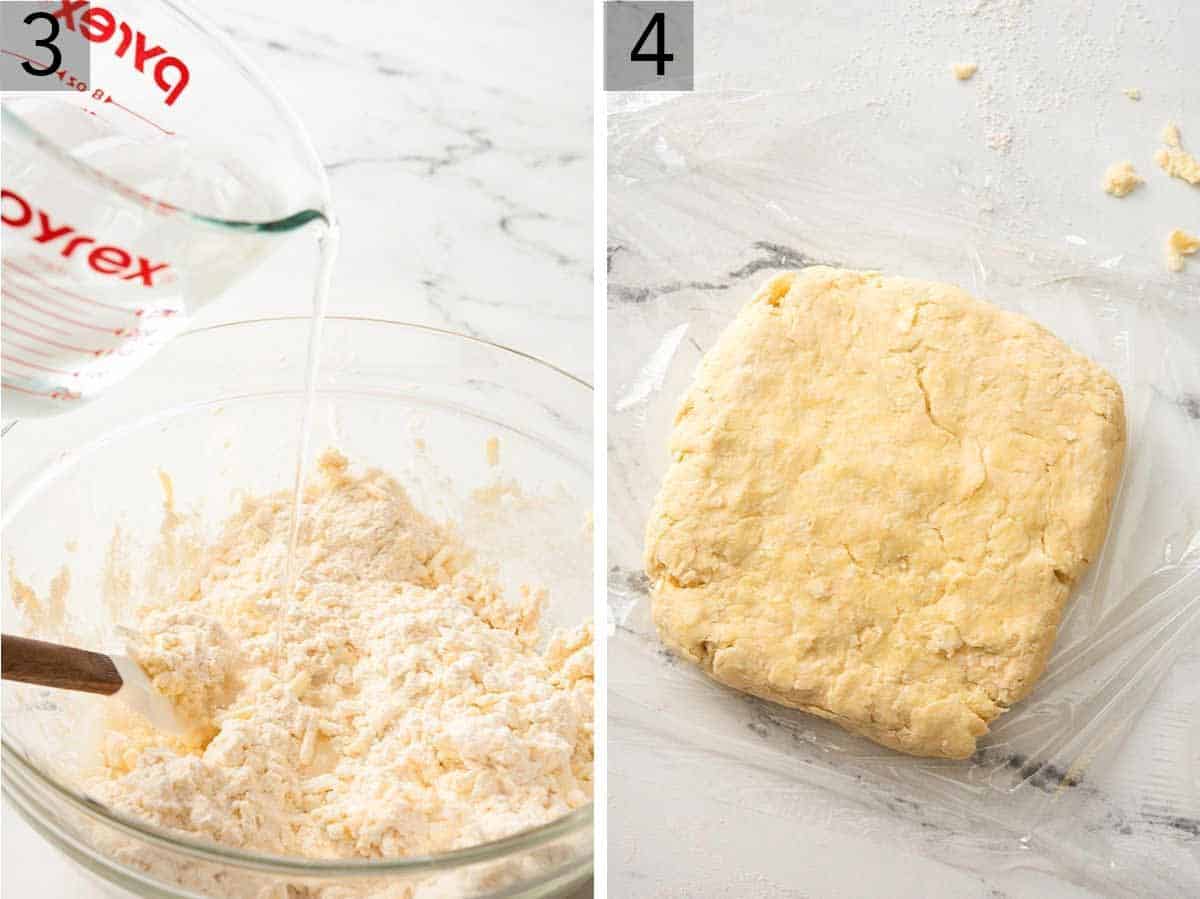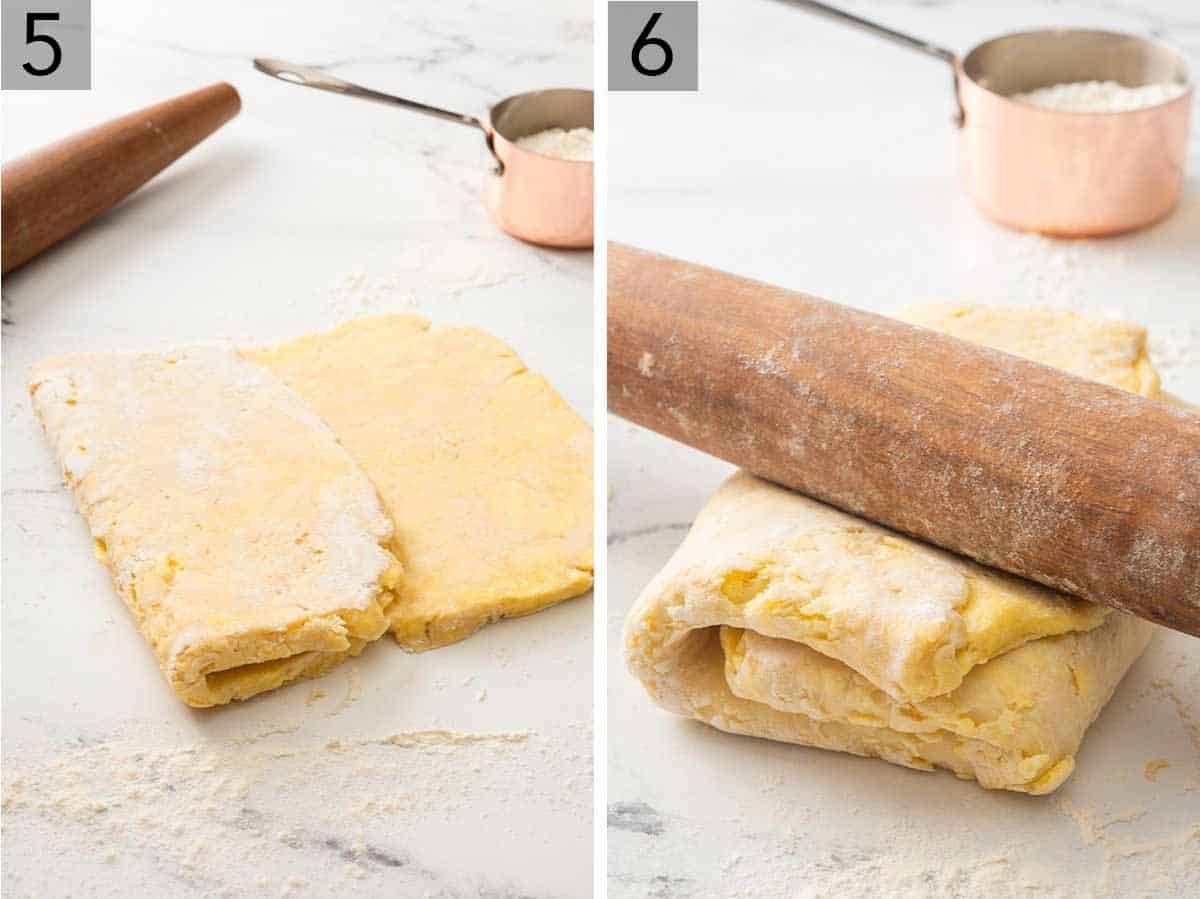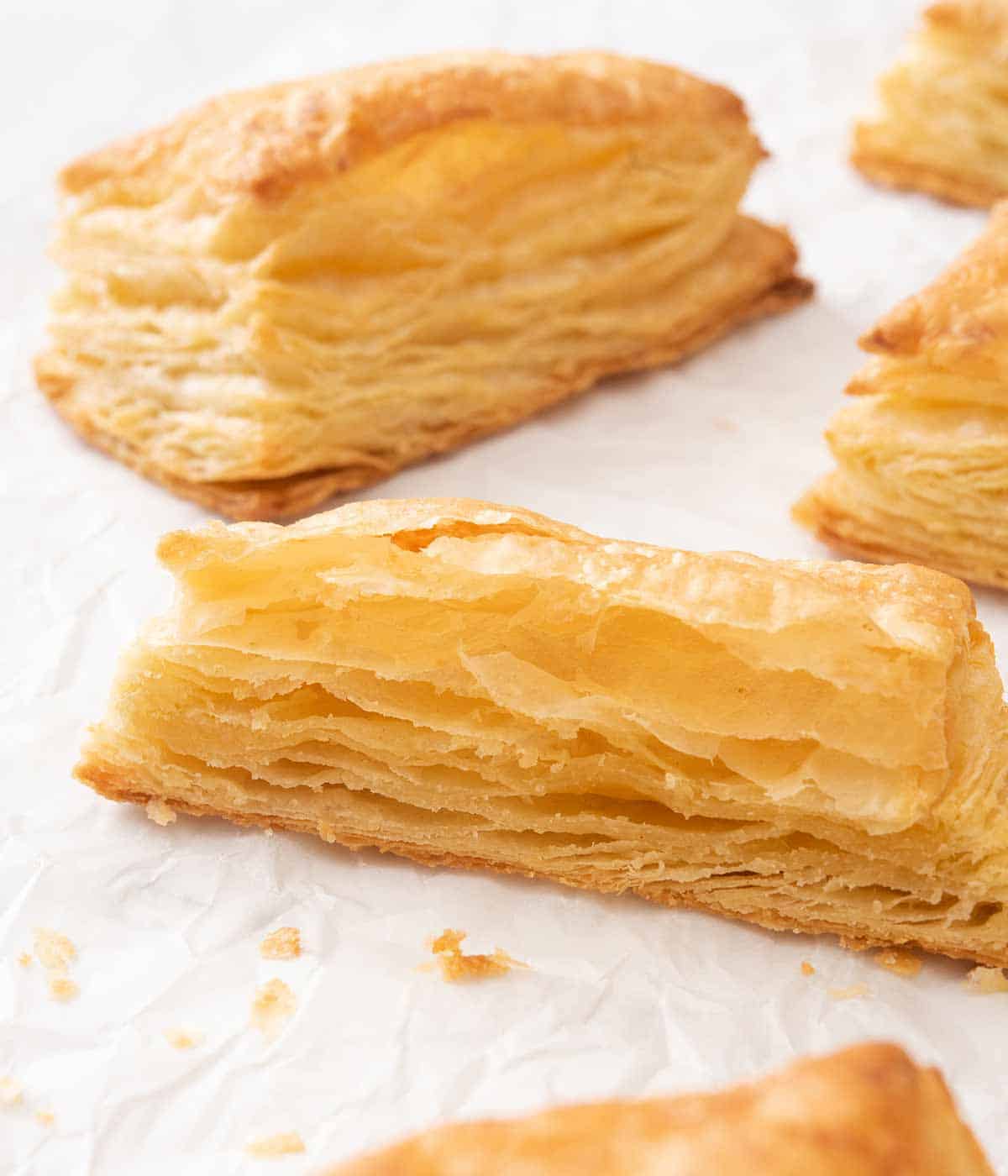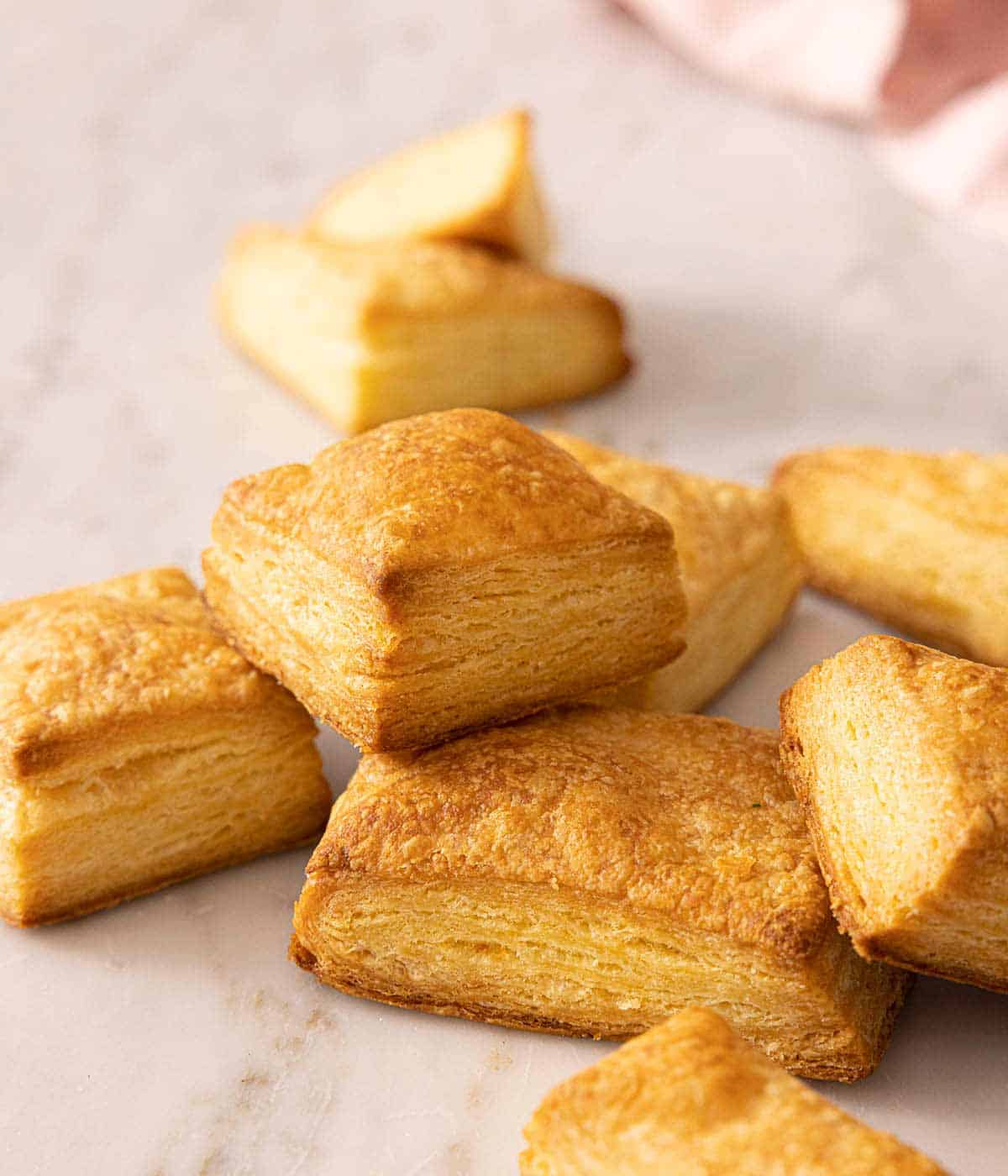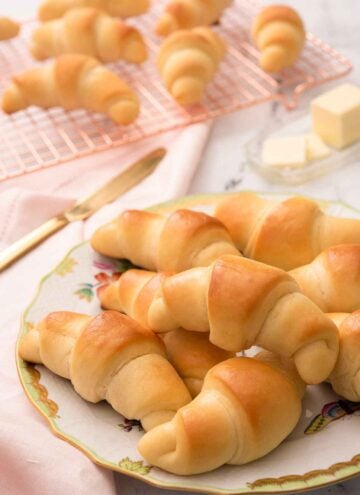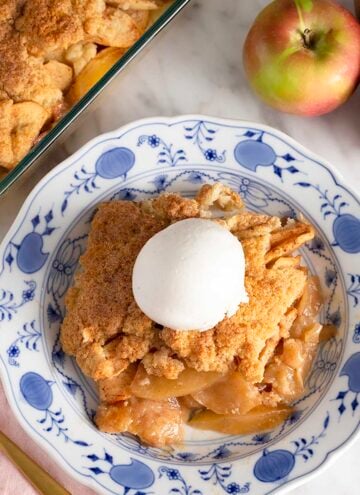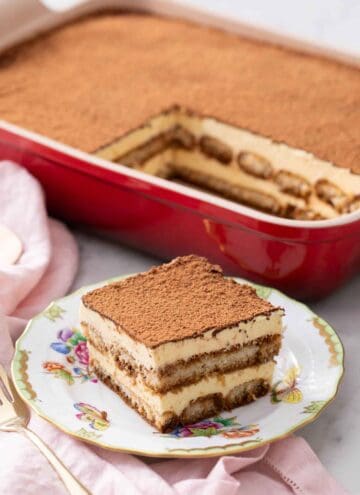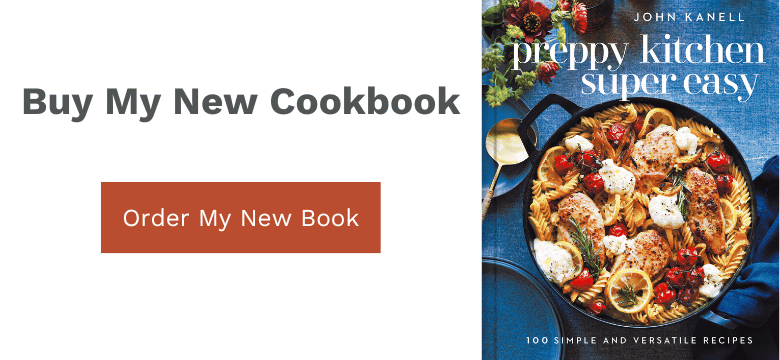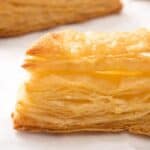What You Need to Make this Recipe
Cold butter — To get the distinct, crispy layers in your pastry, the butter must be cold. When the bits of butter melt in the oven as the pastry bakes, it leaves you with air pockets, making the dough airy and flakey. Cold water — Icy cold water helps keep the dough temperature down and prevents the butter from melting when combined. Making a couple of ice cubes beforehand to keep your water cold is recommended.
How to Make Puff Pastry
Grate the butter. To make it easier to grate, you can freeze the butter beforehand.
Combine the grated butter with whisked flour, sugar, and salt.
Drizzle the cold water over the mixture and fold the mixture until it clumps together.
Gently knead the dough and then shape into a ½-inch thick square and wrap in plastic wrap before chilling for an hour.
On a lightly floured surface, start laminating the dough by rolling out the dough and folding the dough in thirds.
Turn the dough 90 degrees and repeat rolling, folding, and rotating 3 more times before chilling or freezing for later use. It should look much smoother than when you started.
Pro Tips for Making this Recipe
The butter is grated to make the process of laminating quicker and lowers the risk of tearing the dough. If you spend too long trying to roll the dough, you risk the butter getting warm and melting into the dough instead. I do not suggest using cubed butter or roughly chopped butter in place of grated butter. If it’s summer or you have a humid kitchen, keep a close eye on the dough. If you feel the dough is getting too warm at any point of rolling the dough, put it back into the fridge to chill it. If the dough feels rubbery or starts shrinking during the laminating process, place it in the fridge to chill. If you are freezing the dough for later, allow it to thaw in the fridge before you unfold it to avoid cracking or breaking the frozen dough. When freezing the dough, double wrap it in plastic before placing it in a Ziploc bag to prevent freezer burn. You can place your mixing bowl in the fridge ahead of time to help keep the dough cool when you knead in it. Only use as much flour as necessary. If you are over-flouring your surface, you will incorporate more flour into the dough than needed. Too much flour leads to a tougher pastry and prevents the layers from sticking together when laminating.
What does it mean to laminate the dough?
Laminating dough is a technique of layering butter and dough while rolling and folding it several times. This helps distribute the butter evenly throughout the rough puff pastry dough. The result of this is flaky layered pastry after it has baked!
What are some uses for puff pastry?
Use this homemade puff pastry just like you would with store-bought. This recipe yields 1 sheet. Here are some of my favorite recipes: Apple Turnovers, Pastelitos de Guayaba, Asparagus Tart, and Potato Tart.
Can I use margarine?
You must use real butter when making puff pastry. You will have trouble keeping the margarine from melting while you’re laminating the dough. While there are sticks of hard margarine, I highly suggest sticking with butter. Use European-style butter or French butter if possible as it results in more layers due to its high-fat content and will taste much better. If you love this recipe try these out!Cream PuffsCrescent RollsApple CobblerApple CrispTiramisu Recipe If you’ve tried this Puff Pastry Recipe then don’t forget to rate the recipe and let me know how you got on in the comments below, I love hearing from you!
